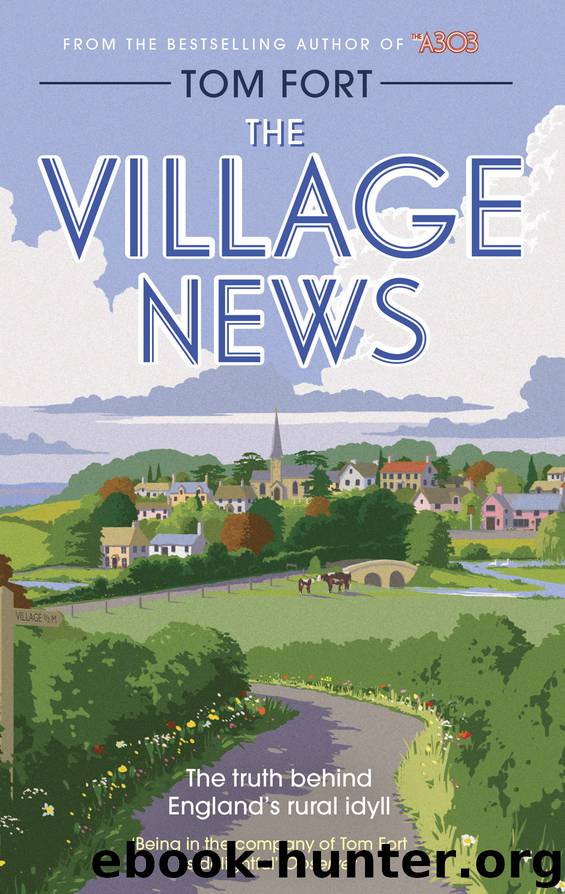The Village News by Tom Fort

Author:Tom Fort [Fort, Tom]
Language: eng
Format: epub
Publisher: Simon & Schuster UK
Flora Thompson
Massingham observed no scruple in claiming Thompson’s work for his own back-to-the-earth agenda. Instead of seeing it for what it was – a closely observed, clear-sighted account of the lives of very different individuals bound by their situation in a particular place at a particular time –Massingham presented it as a generalised account of ‘the irreparable calamity of the English fields . . . the utter ruin of a close-knit organic society with a richly interwoven and traditional culture.’ He asserted, without any foundation at all, that Thompson had described this ‘at the very moment when the rich, glowing life and glowing culture of an immemorial design for living was passing from them’.
Massingham’s introduction continued to feature in the Penguin Modern Classics edition of Lark Rise for more than sixty years, until it was replaced by a very much more accurate and sensible one by Richard Mabey. By then, however, the appropriation of Flora Thompson’s masterpiece to the myth of the pre-Fall rural England of peace and innocence had been cemented by the publication in the 1980s of The Illustrated Lark Rise to Candleford, which sold not far short of a million copies. The text in this lavish production was severely pruned to make way for the illustrations, several of which were of paintings by the popular Victorian watercolourist, Helen Allingham.
Allingham was something of a phenomenon in her heyday, famed for her innumerable depictions of English country cottages characterised by an intensely sugary fin-de-siècle sentimentality. Her cottages were old, low and crooked, with fat chimneys and small windows; often thatched, sometimes tiled, usually beamed, some of mellow brick, some of stone, some of rough cob; almost always enclosed in bloom-bursting gardens and shaded by spreading oaks or elms, often with blossoming or fruit-laden apple and pear trees close by and geese and chickens pecking outside the white wicket gate. The scene would be bathed in a misty, golden haze bestowed by a hidden but fruitful sun. The inhabitants of this Arcadia are outside: happy children at play, maids in bonnets and long skirts, matrons with baskets containing home-made cheese and honey over their arms. There are no interiors for Mrs Allingham, no studies of old men broken by toil sitting by meagre fires, no drunks, no paupers, no hint of disease or want or unkindness; above all, no hint of individuality.
*
Flora Thompson’s triumph was to capture in words everything that Mrs Allingham with her brushes left out. She has been criticised by earnest academics for averting her eyes from the ugly side of working-class rural life: death, disease, cruelty, intolerance and so on. But as Richard Mabey pointed out, this is to misread her intent. She was not interested in writing a social history of rural conditions in north Oxfordshire in the 1890s. Her purpose was to produce literature: an imaginative realisation of a place and its people to achieve a deeper, more powerful truth.
She succeeded because she could write, and because she had the true creative impulse. She
Download
This site does not store any files on its server. We only index and link to content provided by other sites. Please contact the content providers to delete copyright contents if any and email us, we'll remove relevant links or contents immediately.
Asking the Right Questions: A Guide to Critical Thinking by M. Neil Browne & Stuart M. Keeley(5357)
Autoboyography by Christina Lauren(5086)
Dialogue by Robert McKee(4160)
Eat That Frog! by Brian Tracy(4149)
Sticky Fingers by Joe Hagan(3912)
Journeys Out of the Body by Robert Monroe(3460)
Annapurna by Maurice Herzog(3298)
Full Circle by Michael Palin(3268)
Elements of Style 2017 by Richard De A'Morelli(3236)
Schaum's Quick Guide to Writing Great Short Stories by Margaret Lucke(3187)
The Art of Dramatic Writing: Its Basis in the Creative Interpretation of Human Motives by Egri Lajos(2857)
The Diviners by Libba Bray(2800)
Why I Write by George Orwell(2774)
The Mental Game of Writing: How to Overcome Obstacles, Stay Creative and Productive, and Free Your Mind for Success by James Scott Bell(2766)
In Patagonia by Bruce Chatwin(2755)
Atlas Obscura by Joshua Foer(2705)
The Fight by Norman Mailer(2701)
Venice by Jan Morris(2430)
The Elements of Style by William Strunk and E. B. White(2377)
